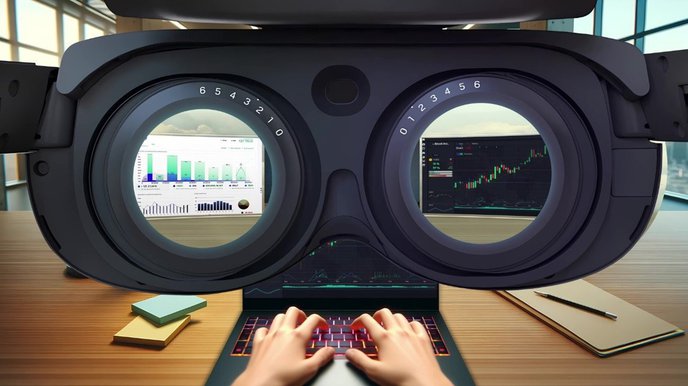The History of Notre-Dame and How VR is Preserving It

Extended Reality
8-minute read
Recently, the Eternal Notre-Dame VR exhibition from France made its debut at the Kaohsiung Museum of Science and Technology. The devastating Notre-Dame fire 2019 is still fresh in many people's memories, and with only one year left until the expected completion of restoration in 2024, Eternal Notre-Dame uses the magical power of VR to transport the audience back to medieval Paris, which is a fascinating endeavor.
Regarding the catastrophic fire four years ago, a news article caught the attention of the public. Although the fire at Notre-Dame Cathedral did not affect the lives of the 200,000 bees on its rooftop, experts discovered that the honey collected downwind from the fire had three times the lead content compared to honey from other areas of Paris. After investigation, it was found that the cause was the use of hundreds of tons of lead in the construction materials of the cathedral, which inadvertently contaminated the honey. However, what made me curious was not the bees or the honey, but the lead itself — how could a Gothic-style building that took nearly 200 years to complete from the 12th to the 14th century use so much lead?
Notre-Dame Cathedral is indeed a medieval Gothic-style building, but it is also a continuously restored structure. The 19th-century architect Eugène Viollet-le-Duc, who specialized in the restoration of medieval architecture, was responsible for the "lead contamination" in this case. "Restoration is modern," he explained. "The purpose of restoring a building is not to maintain, repair, or renovate, but to restore the building to a state of perfection that it never actually existed in." In the romantic period of the 19th century, this statement sounded quite romantic. In simpler terms, for Viollet-le-Duc , restoration meant using a contemporary perspective to improve the past. It was not only a technical practice but also a reinterpretation of history.
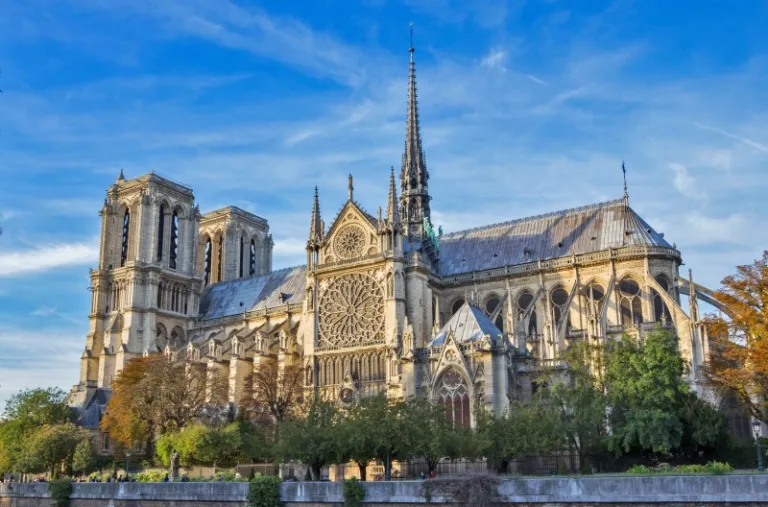
Even though Notre-Dame Cathedral is not as extreme as the Ship of Theseus , it can be said that it is more than just a physical place. One of the selling points of the Eternal Notre-Dame VR experience is taking the audience back to medieval Paris . The section on the Middle Ages will be briefly skipped in this article, and we’ll focus on important periods in French history from the historical flow, hoping to take readers on a journey through time with words. In addition to providing a deeper understanding of this iconic French building, we also want to prepare you mentally before embarking on the immersive VR journey of Eternal Notre-Dame !
1. Gaul Tribes on the Island of Paris in Ancient Times
Many people may not know that the location of Notre-Dame Cathedral,
Île de la Cité
(“Island of the City”), was settled by Gaul tribes on a small island in the Seine River as early as the 3rd century BC. This group of people was called the
Parisii
(the origin of "Paris"), making
Île de la Cité
the heart of Paris.
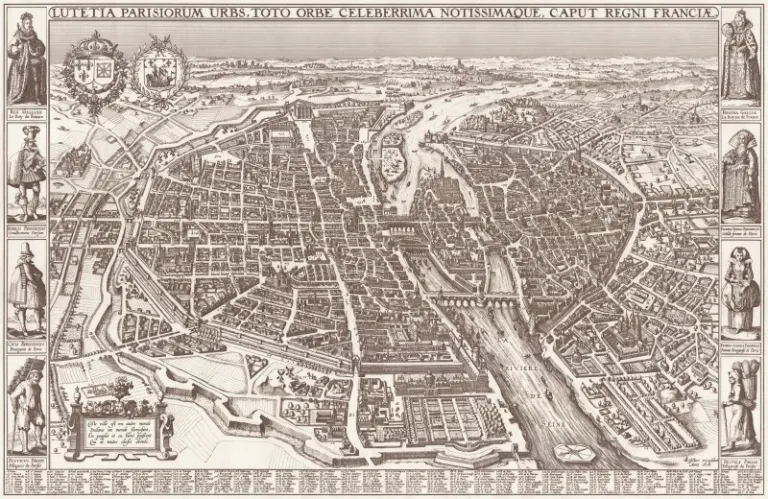 (Source:
Wikipedia
)
(Source:
Wikipedia
)
With the conquest of Gaul by Julius Caesar in the 1st century BC, Paris entered a Roman Gaul period that lasted for five centuries, and Île de la Cité became the location of the Roman governor's fortress. In 508, after defeating the Roman Empire, Clovis I, the "King of the Franks," declared Paris the capital of his kingdom. As a convert to Catholicism, he began constructing churches, and the Cathedral of Saint Étienne he built on Île de la Cité happened to be located beneath Notre-Dame Cathedral today. The location of the former Cathedral of Saint Étienne is marked on the floor of the square in front of Notre-Dame Cathedral.
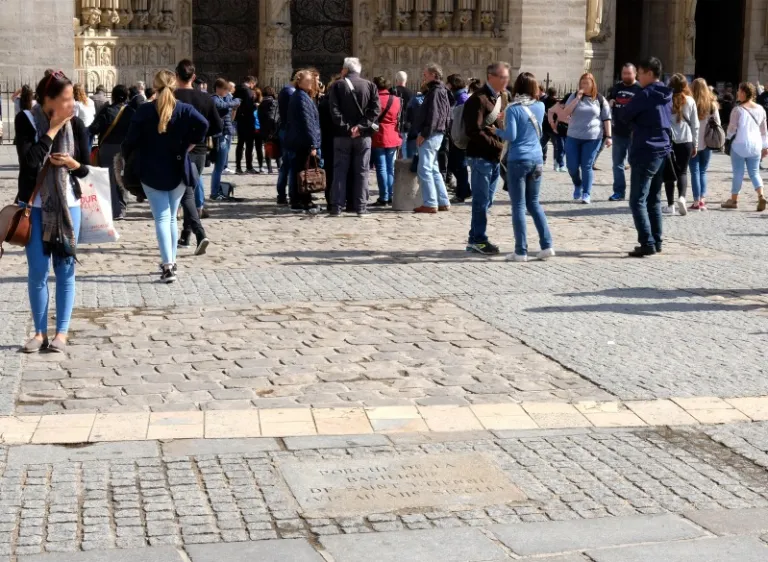 (Source:
Wikipedia
)
(Source:
Wikipedia
)
2. Romanticism, Victor Hugo, and The Hunchback of Notre-Dame
Everyone knows that Victor Hugo's The Hunchback of Notre-Dame sets its story in Notre-Dame Cathedral, but its original title is also straightforwardly Notre-Dame de Paris . This is not a coincidence. The publication of this novel directly led to the aforementioned restoration project of Notre-Dame Cathedral by Viollet-le-Duc (this gentleman also appears in the Eternal Notre-Dame VR experience!). It was only after his restoration that Notre-Dame Cathedral truly became the image people have in their minds, until the fire happened.
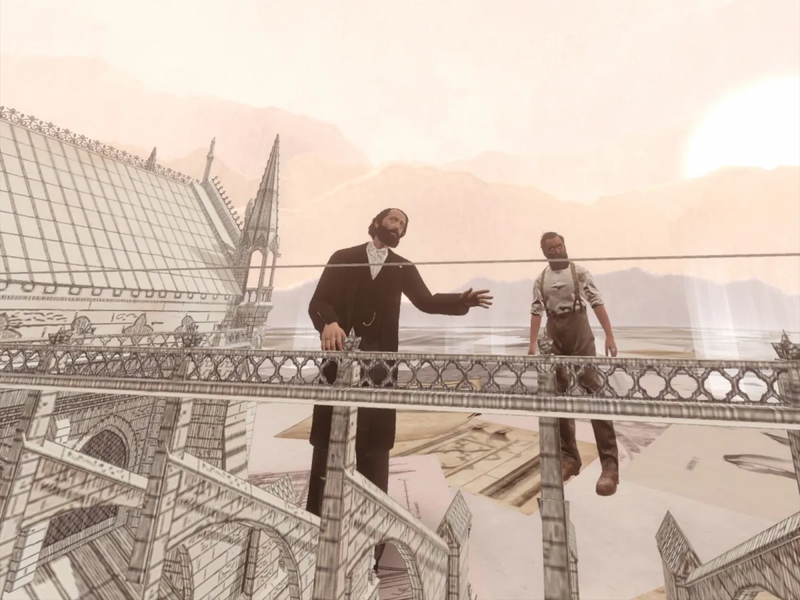 (Source: ©Orange/Excurio)
(Source: ©Orange/Excurio)
When talking about The Hunchback of Notre-Dame , most people focus on the Romani girl and the hunchback bell-ringer raised by the archdeacon, among other storylines. But in fact, this is a love letter written by Hugo to the Middle Ages, to Gothic architecture, and to Notre-Dame Cathedral. Hugo lived in a time that experienced the great turmoil of French modern history — born a few years after the French Revolution, when the monarchy was coming to an end and the Republican party was rising, and after the hero of the people, Napoleon, became emperor and was exiled, followed by a series of power struggles between the Legitimists and Republicans — the restoration of the monarchy, the July Revolution, the February Revolution, and so on.
Notre-Dame Cathedral could not stand alone, especially during the French Revolution when it was seen as a symbol of the old regime and superstition. It was renamed the Temple of Reason and suffered extensive damage to its artifacts. Even the twenty-eight statues of the biblical kings on the west facade were mistakenly beheaded because they were thought to be statues of the French kings. The bells were melted down to make cannonballs, and even the altar of the Virgin Mary was replaced by the ancient Roman goddess of Liberty. Of course, all of this cannot be solely blamed on the turbulent times. The church itself removed many stained glass windows that symbolized the Middle Ages and replaced them with transparent glass, losing the grandeur of the Gothic style.

(Source:
Wikipedia
)
The long-neglected Notre-Dame Cathedral reeked of neglect, and the Paris City Council even discussed completely demolishing it. Hugo's era coincided with the Romanticism movement, which reflected on the Enlightenment era and replaced science and reason with emotion and individualism. There was a great fascination with everything medieval. Notice the keyword "Middle Ages." This representation of the Middle Ages, Notre-Dame Cathedral, was about to be demolished. To save it, Hugo wrote The Hunchback of Notre-Dame and set the story in the 15th century, when Gutenberg invented movable type printing.
"To write with stone is a privilege that can be compared to our current freedom of publishing, which is the freedom of architectural art," he wrote. Hugo believed that before the invention of printing, architecture was the greatest art form that could carry human thoughts. As he said, "Poets are architects." Through the voice of the archdeacon, he expressed his concern that the popularization of printing would eliminate architecture, stating, "This will kill that" ( Ceci tuera cela ). But what is more interesting is that in the end, it was books that saved Notre-Dame Cathedral. With the success of The Hunchback of Notre-Dame translations selling throughout Europe, tourists flocked to the cathedral (a perfect example of city marketing). This novel's popularity led to a revival of Gothic architecture and a historical preservation movement, including Viollet-le-Duc's restoration project for Notre-Dame Cathedral.
3. Gothic Revival and Eugène Viollet-le-Duc
Starting in 1844, Viollet-le-Duc spent a full 20 years to complete the restoration of Notre-Dame Cathedral, which is four times the time compared to the five-year restoration deadline set by French Prime Minister Macron after the recent fire. Therefore, it is quite impossible to cover everything in such a short time. When it comes to his great achievements, we must introduce the spires, gargoyles, and chimeras. Finally, let's talk about what this master of medieval architectural restoration, who is responsible for the lead contamination incident, actually did.
The Burned Spire
When it comes to the spire, many people's minds may recall the spire that collapsed in the raging fire. Yes, this spire was also created by Viollet-le-Duc. But wasn't the spire built in the Middle Ages? Yes, a spire was indeed built in the 13th century, but it gradually deteriorated by the 17th century and eventually collapsed. Therefore, Notre-Dame Cathedral actually went through several decades without a spire.
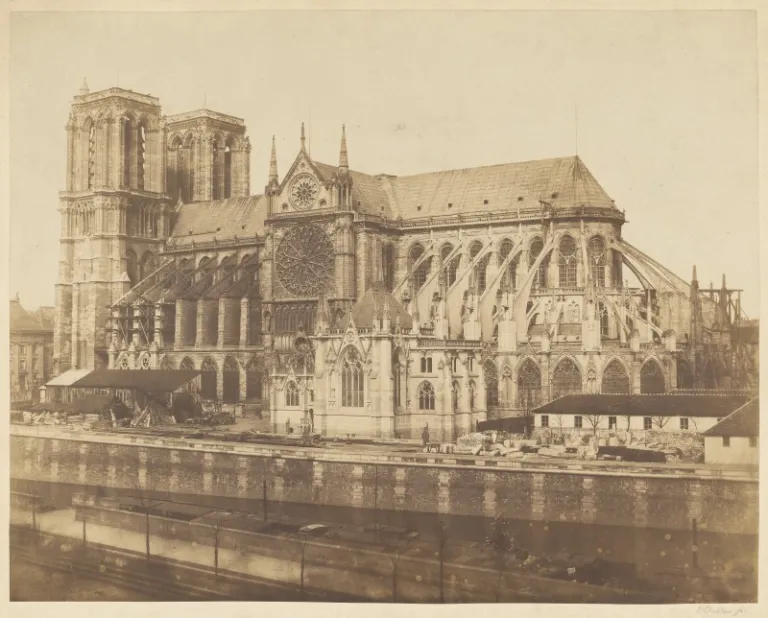 (Source:
Wikipedia
)
(Source:
Wikipedia
)
Later, Viollet-le-Duc took over the restoration work of Notre-Dame Cathedral and used oak wood from the Champagne region of France to create a new spire, which was covered with a large number of lead sheets to slow down the decay of the wood (poor bees). Here's an interesting fact: the later-built Eiffel Tower by Gustave Eiffel was structurally inspired by Viollet-le-Duc's Gothic spires ( Source ).
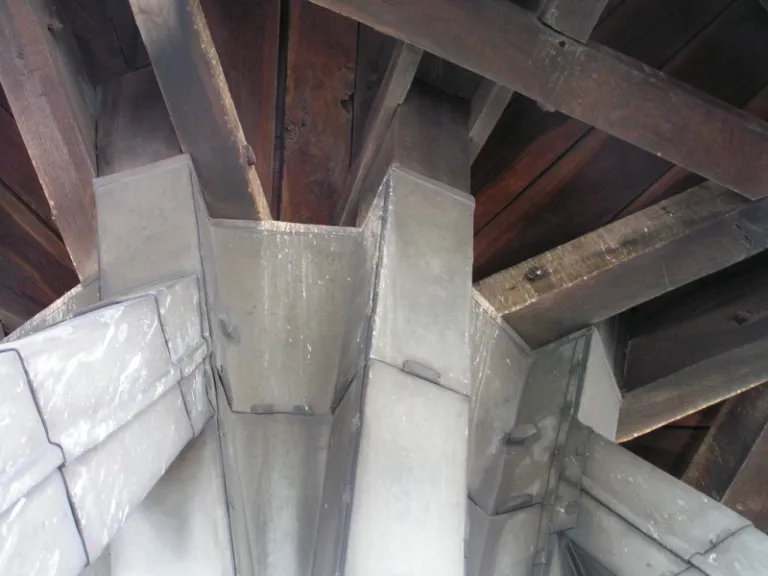 (Source:
Wikipedia
)
(Source:
Wikipedia
)
Therefore, the Notre-Dame Cathedral that is expected to be restored by 2024 will also welcome its third spire.
Medieval Monsters? Gargoyles and Chimeras
Gargoyles and chimeras are among the most popular and must-see design details of the Notre-Dame Cathedral. Gargoyles and chimeras, created in different eras, and I believe many people are confused about them.
Gargoyles are also known as "grotesques" (adding to the medieval atmosphere). They are called gargoyles because of their function—to protect walls and buildings from the erosion of rainwater and seepage. In simple terms, they are Gothic-style "rain gutters." Gargoyles can indeed be traced back to the 12th-13th centuries, but centuries of weathering have caused significant damage to many gargoyles. Therefore, Viollet-le-Duc seriously studied the original style and created many new gargoyles to replace the damaged ones.
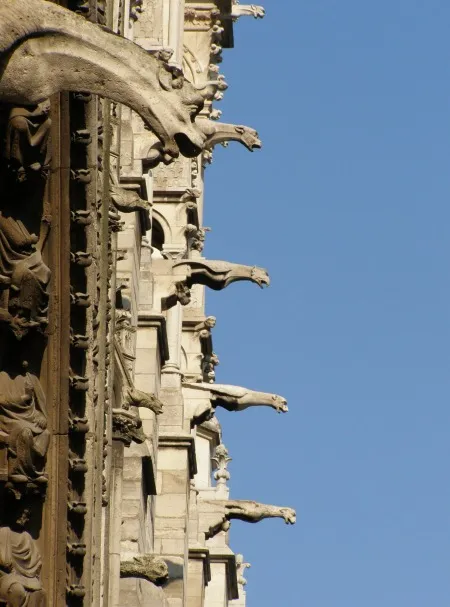
(Source: Wikipedia )
Many people are probably familiar with chimeras, and the term "chimera ant" from "Hunter x Hunter" is the same word. Some people even use the term "grotesques" to refer to chimeras. Chimeras are imaginary creatures assembled from different animal features. Unlike gargoyles, which have a functional purpose of aiding in rainwater "drainage," the chimeras are not authentic medieval artifacts. Instead, they are purely decorative flourishes created by Viollet-le-Duc to enhance the medieval atmosphere.
Among the many chimeras, one called "Le Stryge" is particularly famous. Le Stryge has a pensive expression, as if overlooking the lives of all beings in Paris, evoking curiosity from photographers and artists since the 19th century.
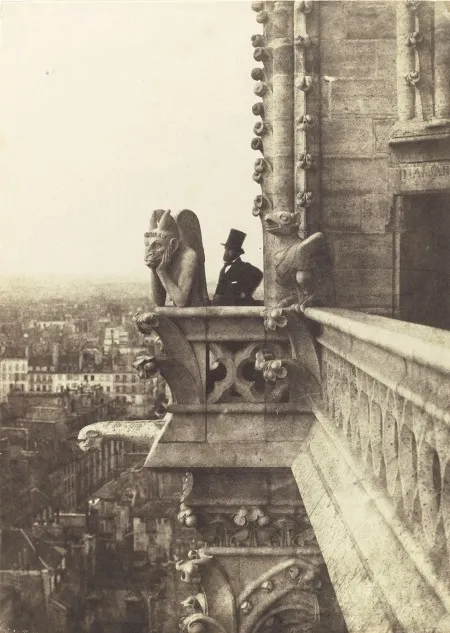
(Source: Musée d’Orsay)
Well, the historical anecdotes of Notre-Dame Cathedral are too numerous to include here. Through this article, everyone can hopefully feel the shared memories of the French people that this building, standing in the heart of Paris for nearly a thousand years, carries. And the Eternal Notre-Dame exhibition currently showcased at the Kaohsiung Museum of Science and Technology is not only an original import from France to Taiwan but also originally exhibited in the underground parking lot of Notre-Dame Cathedral (remember the mention earlier that the underground of Notre-Dame Cathedral contains the remains of the former Cathedral of Saint Étienne?). People can luckily experience such a refined and culturally rich VR work in Taiwan. If Hugo's The Hunchback of Notre-Dame was a written record of the fleeting eternity of Notre-Dame Cathedral, then the current Eternal Notre-Dame is also a sincere love letter, preserving Notre-Dame Cathedral eternally in virtual reality. (By the way, the VR content does not include bees! 🐝)

